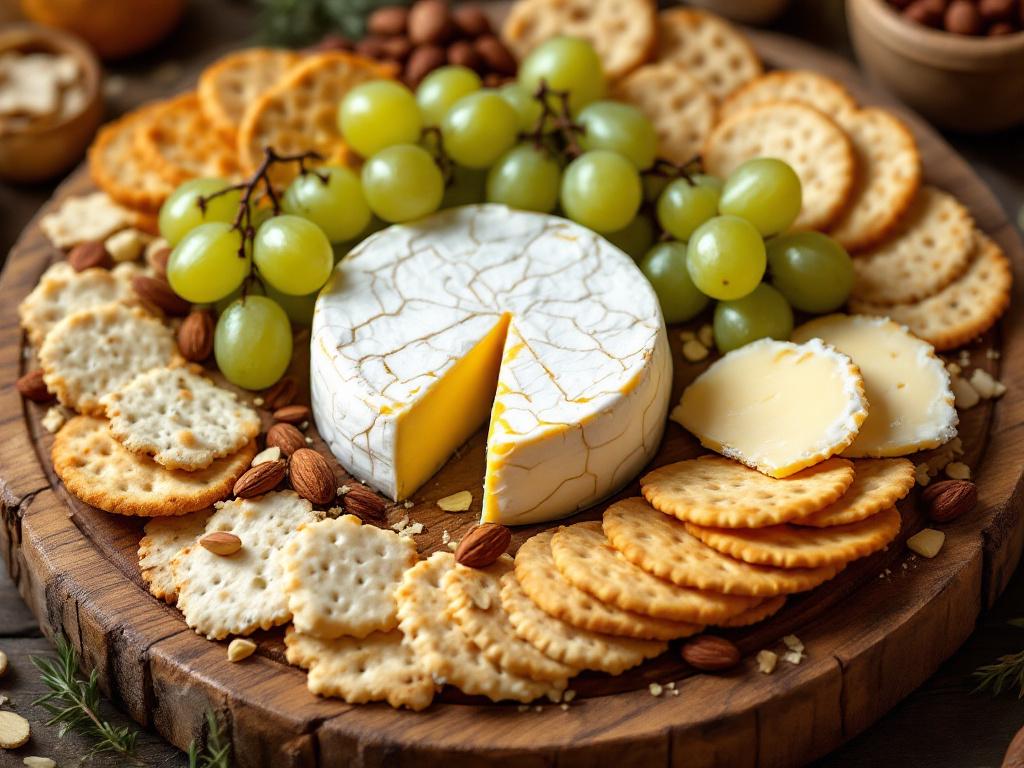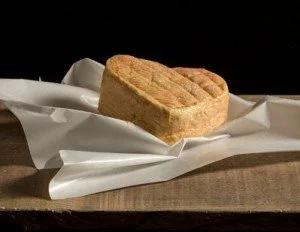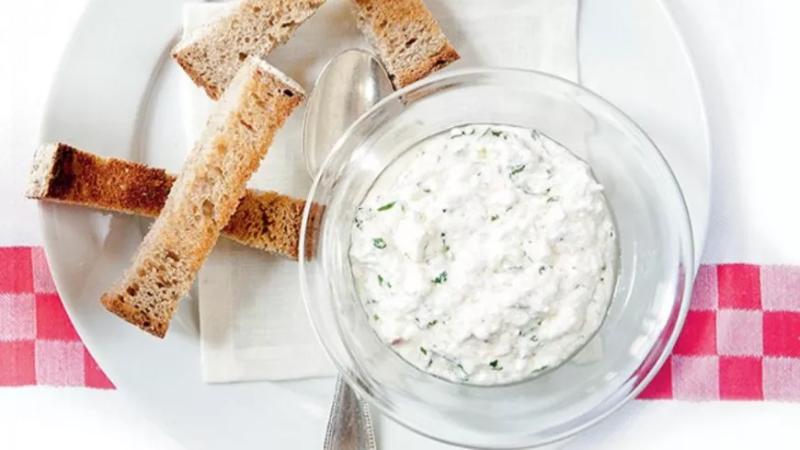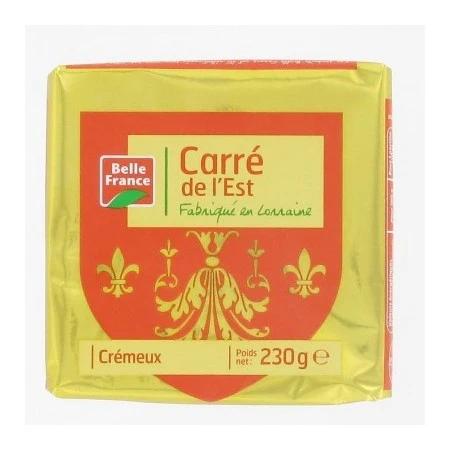Hey there, cheese enthusiasts! Grab a seat and let's dive into the world of creamy delights. Today, we're exploring the fascinating differences between Camembert and Brie—two French cheeses that are beloved around the world. Whether you're a seasoned connoisseur or just starting your cheese journey, understanding the unique qualities of Camembert and Brie can elevate your deli experience to new heights. So, let's get started!
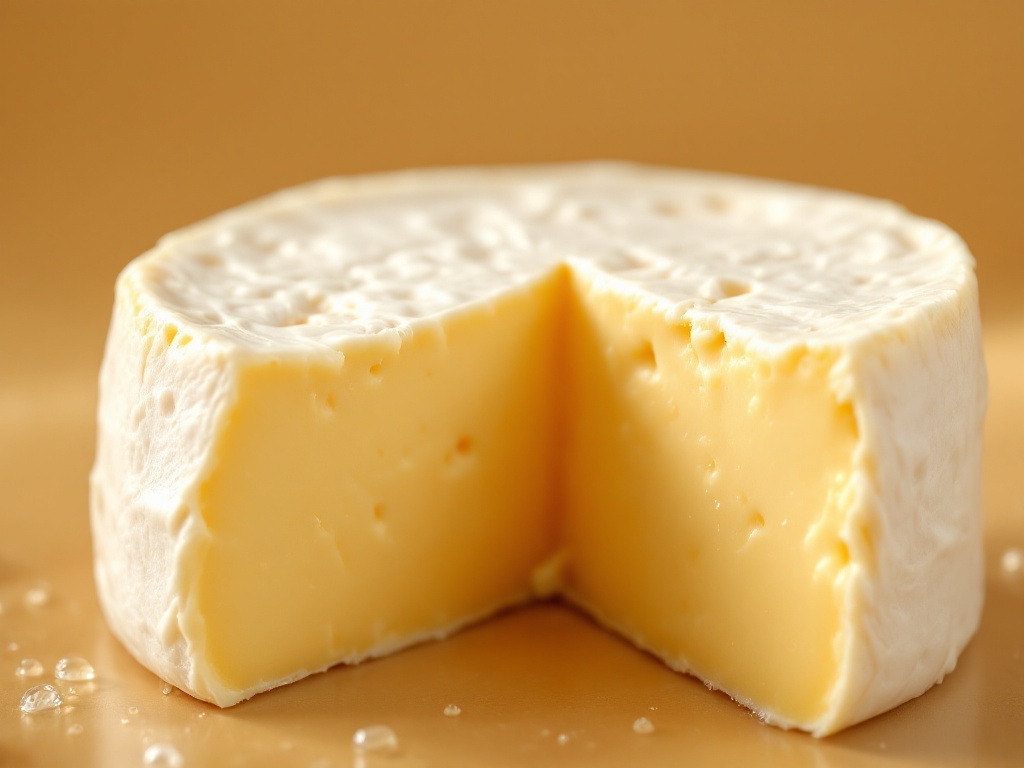 A close-up image of a wheel of Camembert cheese with a white, bloomy rind, showcasing its creamy interior.
A close-up image of a wheel of Camembert cheese with a white, bloomy rind, showcasing its creamy interior.
What is Camembert?
Camembert is a soft, creamy cheese that hails from the Normandy region of France. Known for its rich and buttery flavor, this cheese is made from cow's milk and boasts a striking white, bloomy rind that develops during the aging process. Camembert is often enjoyed at room temperature, allowing its texture to become even creamier, making it a delightful addition to cheese boards or served alongside crusty bread and fresh fruits.
One of the key aspects that sets French Camembert apart from Brie is its production process. While both cheeses are made from similar ingredients, Camembert is typically produced in smaller rounds, which results in a slightly firmer texture and a more pronounced flavor. The traditional method of making Camembert involves using specific bacterial cultures and rennet, which contribute to its distinct taste and aroma. This gives cheese lovers a very different experience when comparing the French Camembert vs Brie difference.
Taste and Aroma
When it comes to taste, Camembert has a nutty and earthy profile, often with hints of mushrooms and a slight tanginess. This complexity makes it a favorite among cheese enthusiasts. The variations in taste can greatly enhance the enjoyment of pairing each cheese with different wines, fruits, or nuts, offering a unique culinary experience with each type.
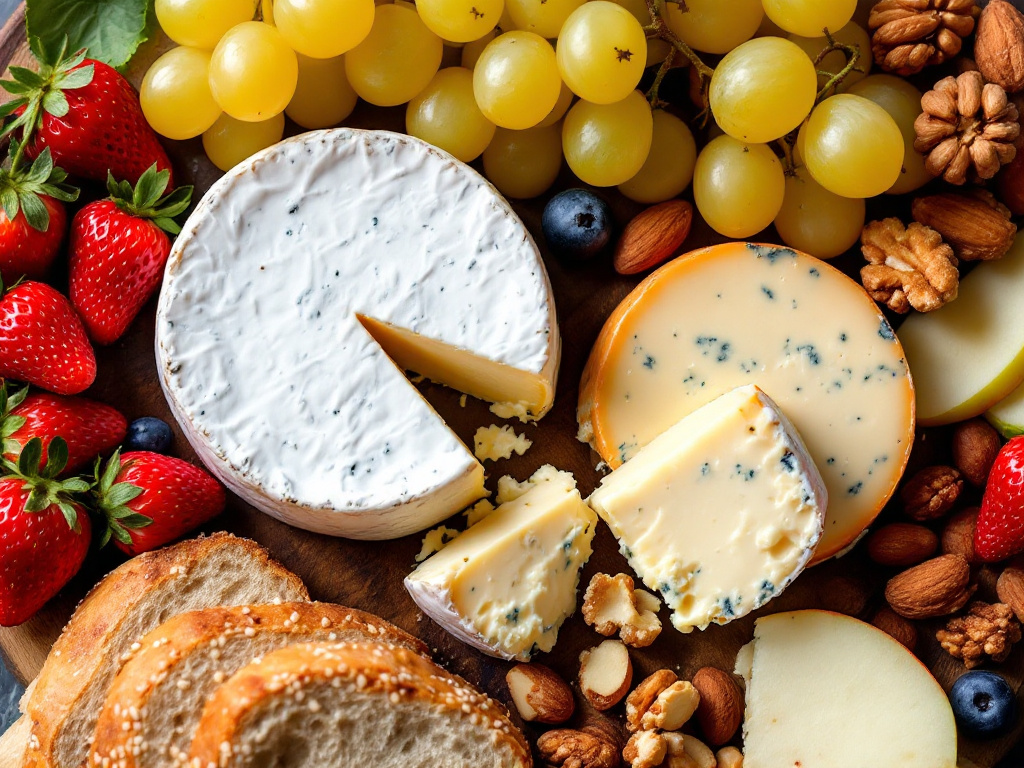 A beautifully arranged cheese board featuring both Camembert and Brie cheeses, surrounded by fresh fruits, nuts, and crusty bread.
A beautifully arranged cheese board featuring both Camembert and Brie cheeses, surrounded by fresh fruits, nuts, and crusty bread.
Hints and Tips:
- Storage: Store Camembert in the refrigerator, wrapped in wax paper or parchment paper to allow it to breathe.
- Serving: For the best flavor, take Camembert out of the fridge about an hour before serving to let it reach room temperature.
What is Brie?
Brie is a soft cheese that also originates from France, renowned for its creamy texture and rich flavor. This delicious cheese is made from cow's milk, giving it a distinctive taste that can be both buttery and earthy. The cheese is famous for its pale yellow interior and white, edible rind, which forms during the aging process. Brie is often served at room temperature, allowing its flavors to develop fully, making it a popular choice for cheese boards and culinary dishes alike.
The production of Brie involves a careful fermentation process, using specific bacteria and molds to achieve its unique characteristics. The cheese is typically aged for several weeks, during which it develops a velvety rind and a luscious, soft center. Depending on the type of Brie, flavors can range from mild and buttery to more pronounced and pungent notes, making it versatile for different palates.
Texture and Flavor
When discussing the French Camembert vs Brie difference, it's important to note that while both cheeses are soft and made from cow's milk, they have distinct origins and flavor profiles. Camembert hails from Normandy and usually has a stronger flavor compared to Brie. Additionally, the texture of Camembert can be a bit firmer, and it often has a more pronounced aroma. This difference in characteristics makes each cheese unique, appealing to different preferences among cheese lovers.
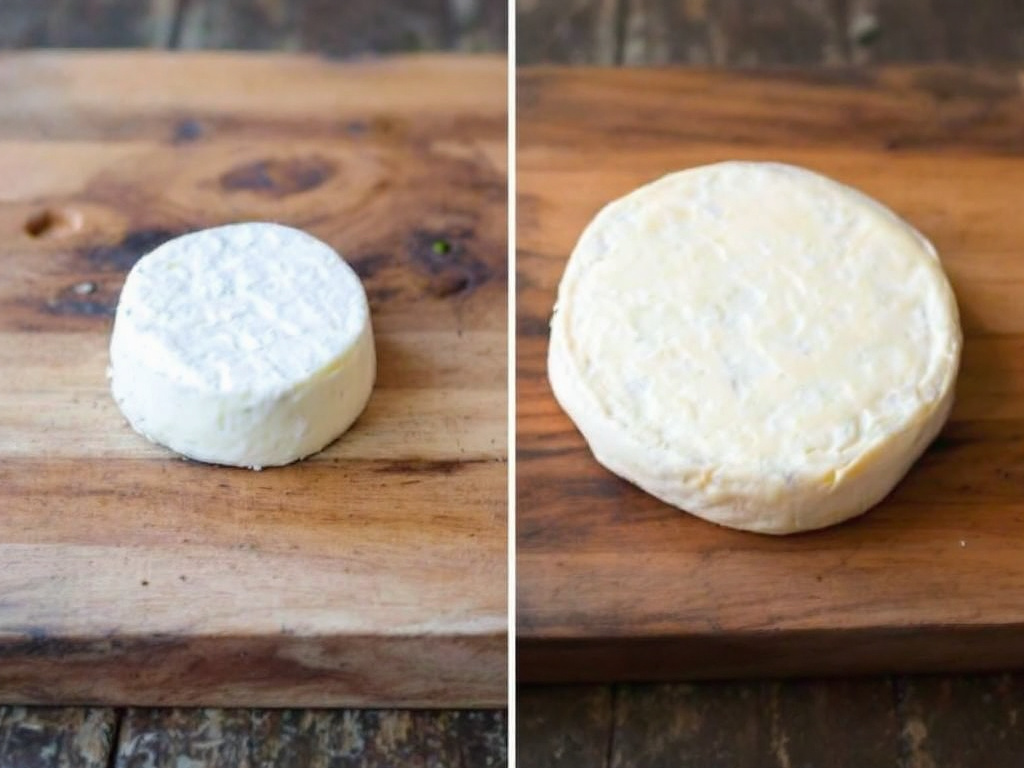 A side-by-side comparison of Camembert and Brie cheeses, highlighting their distinct textures and rinds.
A side-by-side comparison of Camembert and Brie cheeses, highlighting their distinct textures and rinds.
Hints and Tips:
- Pairing: Brie pairs beautifully with sparkling wines or champagne, which highlights its delicate flavors.
- Presentation: For a stunning presentation, serve Brie with a variety of crackers, fresh grapes, and a drizzle of honey.
Taste and Texture Comparison
When diving into the world of cheese, the taste and texture of French Camembert and Brie can leave many cheese lovers in a delightful dilemma. Both cheeses are creamy, soft, and have a similar appearance, but they possess distinct characteristics that set them apart. Understanding the French Camembert vs Brie difference in taste and texture can greatly enhance your cheese-tasting experience.
Starting with Camembert, this cheese typically has a stronger flavor profile. It can sometimes be described as earthy, with notes that hint at mushrooms and a subtle, slightly tangy finish. The texture of Camembert is often a bit firmer than Brie, allowing it to hold its shape during slicing but still providing that creamy mouthfeel that cheese enthusiasts adore.
On the other hand, Brie tends to have a milder, sweeter taste. This gentle flavor makes it a favorite for those who might be new to soft cheeses. The texture of Brie is luxuriously creamy, often described as almost buttery, which melts seamlessly in your mouth. This creaminess can be attributed to its higher fat content, making it a go-to option for cheeseboards and pairings with fruits and nuts.
Ideal Pairings for Each Cheese
When it comes to enjoying cheese, pairing it with the right accompaniments can elevate your experience. French Camembert vs Brie difference not only lies in their texture and flavor but also in how they pair with various foods and drinks. Each cheese has its own character that complements specific flavors. Let's explore some ideal pairings for both!
French Camembert, known for its earthy and robust flavor, pairs wonderfully with crusty bread or fresh baguettes. The creaminess of the cheese perfectly contrasts with the crispy texture of the bread. For a sweet touch, try adding a layer of fig jam or honey, which enhances the cheese's rich taste. Additionally, a glass of Chardonnay or a fruity red wine pairs exquisitely, bringing out the cheese's nutty notes.
On the other hand, Brie, often milder and creamier, is a wonderful match for tart fruits such as apples and pears. The sweetness of the fruit balances the cheese's richness, creating a delightful combination. For those who enjoy a bit of crunch, almond or walnut toppings can add an extra layer of texture. Complementing a serving of Brie with a sparkling wine or champagne can make for a refreshing pairing that highlights the cheese's delicate flavors.
Whether you choose French Camembert or Brie, knowing how to pair these cheeses can enhance your tasting experience. Each cheese brings its own unique flavors, offering a delightful exploration of texture and taste. So next time you're enjoying a cheese platter, consider the perfect accompaniments that bring out the best in these beloved French cheeses!
 A cozy indoor setting with a baked Camembert cheese served with a variety of dipping accompaniments, such as breadsticks and crackers.
A cozy indoor setting with a baked Camembert cheese served with a variety of dipping accompaniments, such as breadsticks and crackers.
Hints and Tips:
- Baking Camembert: For a gooey delight, bake Camembert in the oven at 350°F (180°C) for about 15-20 minutes. Serve with breadsticks, crackers, or fresh veggies for dipping.
- Cheese Board: Create a visually appealing cheese board by arranging an assortment of cheeses, fruits, nuts, and crackers in a rustic, wooden board.
Funny Story Time!
I remember the first time I tried to impress my friends with a fancy cheese platter. I had carefully selected a variety of cheeses, including both Camembert and Brie. As I proudly presented my masterpiece, one of my friends asked, "What's the difference between these two?" I confidently launched into a detailed explanation, only to realize halfway through that I had mixed up the cheeses on the platter! We all had a good laugh, and it turned into a fun guessing game. Lesson learned: always double-check your cheese labels before serving!
Conclusion
In conclusion, understanding the key differences between Camembert and Brie can truly enhance your deli experience. From their distinct production processes to their unique flavor profiles, each cheese offers a delightful journey for your taste buds. Whether you're hosting a dinner party or simply indulging in a cozy night in, knowing the French Camembert vs Brie difference can help you choose the right cheese for every occasion. So, go ahead and explore the wonderful world of French cheeses—your palate will thank you!
References
To dive deeper into the world of Camembert and Brie, check out these high authority outbound links:
- Cheese.com - Camembert - A comprehensive guide on Camembert cheese, its origins, and flavor profile.
- French Cheese Board - Brie - Detailed information on Brie cheese, including its history and culinary uses.
- Culture Cheese Magazine - French Cheeses - An in-depth look at various French cheeses, including Camembert and Brie.
- The Spruce Eats - Camembert vs Brie - A comparison of Camembert and Brie, highlighting their differences and similarities.
- Serious Eats - Guide to French Cheese - A guide to French cheeses, including tips on how to select and serve them.
Related Products
- Marin French Cheese Co. Camembert 8oz
- Herve Mons Camembert Cheese 8.5 oz
- Chatelain Creamy Camembert Cheese 8 oz
- President Brie Cheese 8 oz Round
- Laura Chenel Goat Brie Cheese 5 oz
- Isigny Ste Mere Double Cream Brie Cheese 350g
- Imported French Triple Cream Brie 6.5 oz
- Canada Brie Cheese Round by Dietz Watson 7 oz
- Fromager d'Affinois Brie Cheese 150g
- French Cheese Assortment for Deli Lovers
